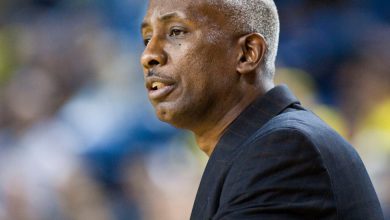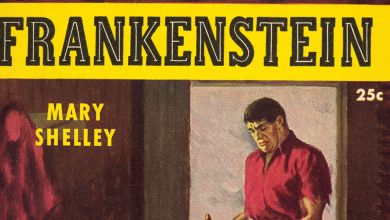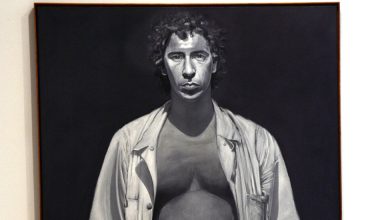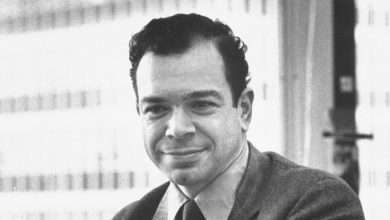Bob Richards, Pole-Vaulting Hero of the Cold War Era, Dies at 97

Bob Richards, the only male two-time winner of the Olympic pole vault, who in the 1950s became a hero of American Cold War competition with the Soviet Union and a breakfast-table hero to millions as the first champion on the front of the Wheaties box, died on Sunday at his home in Waco, Texas. He was 97.
His son Paul confirmed the death.
Long before modern athletes began riding fiberglass poles to unimaginable heights, the Rev. Robert E. Richards, an ordained minister nicknamed the Vaulting Vicar, won Olympic gold medals in 1952 at Helsinki, Finland, and in 1956 at Melbourne, Australia, using aluminum poles to clear bars set at just under 15 feet.
Although he broke Olympic records and Russian hearts, and although he became one of America’s most lionized and familiar celebrities — a motivational speaker and Wheaties pitchman who personified wholesome values and once ran for president of the United States on a third-party ticket — Richards, even at the peak of his athletic power, was not the greatest American pole-vaulter of all time.
That distinction, as Richards acknowledged, belonged to Cornelius Warmerdam, a Californian who used bamboo poles to set world records of about 15 feet 8 inches in the early 1940s. Warmerdam, known as Dutch, might have been an odds-on Olympic favorite, but he never got to compete because the quadrennial Games were suspended in 1940 and 1944 for World War II, when he was serving as a Navy officer.
Today’s top male vaulters, with refined techniques and springy fiberglass poles that bow almost to U shapes, routinely soar over crossbars set above 19 feet. The world record is held by Armand Duplantis, an American-born Swedish athlete known as Mondo, who just this month vaulted 20 feet 4 3/4 inches, surpassing his own previous five world records, all over 20 feet and all set since 2020. Even Richards’s son Brandon, as a teenager using a fiberglass pole in 1985, vaulted 18 feet 2 inches, which was then a national record for a high schooler and stood for 14 years.
Richards himself never vaulted more than 15 feet 6 inches. But from 1947 to 1957, he dominated national and international competitions by clearing 15 feet more than 125 times. Besides winning two gold medals in the Olympics in the 1950s, he took a bronze medal at the 1948 Olympics in London and gold at the Pan American Games in 1951 and 1955. He also won 17 A.A.U. championships in indoor and outdoor vaulting competitions, and United States decathlon championships in 1951, 1954 and 1955.
Capitalizing on his fame, Richards became director of the Wheaties Sports Federation, founded in 1958 after President Dwight D. Eisenhower called for a national physical fitness campaign. Richards became the face and voice of the cereal known as the “Breakfast of Champions.”
His image was on Wheaties boxes from 1958 to 1970, and from 1958 to 1972 he was a ubiquitous presence on television and radio and made numerous national tours, speaking to school and community groups, presenting awards at athletic banquets and generating torrents of publicity.
“The family that plays and prays together stays together,” Richards intoned on countless occasions. At 20, he had been ordained a minister of the Church of the Brethren, an Anabaptist denomination, and the news media had reflexively called him the Vaulting Vicar and the Pole Vaulting Pastor. He had been a pastor in California only briefly, but the dual image of minister and champion athlete was irresistible on the speaking circuit.
In 1970, he bicycled 3,300 miles from Los Angeles to New York to promote fitness. And he was perfect on the Wheaties box: a muscular all-American with a smile that radiated confidence, health and upright living. In fact, as a youth Richards, the son of a broken home, had run with a gang of thieves and brawlers, and five of his friends went to prison for robbery. But he escaped the street life into religion and athletics.
In his life after sports, Richards portrayed himself in a television biography, “Leap to Heaven” (1957); hosted a weekly children’s television program in Los Angeles; reported for NBC, CBS and ABC on the Olympic Games in Rome, Innsbruck, Tokyo and Montreal; and delivered some 12,000 motivational speeches to corporate sales forces, high school students and community organizations.
He also ran for president on the far-right Populist Party ticket in 1984, espousing a platform that called for abolishing personal income taxes, cutting the federal budget in half, repudiating the national debt, deporting illegal immigrants and denying the right to vote to anyone on welfare for more than a year. He tallied about 66,000 votes out of 92.6 million as President Ronald Reagan and the Republicans trounced Walter Mondale, the former Democratic vice president and senator from Minnesota.
Richards was elected to the United States Olympic Hall of Fame in 1983, and to the United States National Track and Field Hall of Fame in 1975. He continued participating in track and field events as he aged, joining the World Masters Games in quadrennial competitions popular with retired professional athletes and former Olympic competitors.
His autobiography, “Heart of a Champion,” was published in 1959. Until 2012, he had lived on a ranch in Santo, Texas, which he named the Crossbar Ranch after the obstacles that he famously vaulted over, and which was involved in numerous commercial activities, including oil and gas exploration and horse and cattle grazing. He retired to a ranch in Waco, where he owned a golf course.
Robert Eugene Richards was born on Feb. 20, 1926, in Champaign, Ill., the third of five children of Leslie and Margaret (Palfrey) Richards. His father was a telephone lineman.
Bob showed early abilities in basketball and was a pole-vaulter and a star quarterback at Champaign Central High School. His parents were divorced when he was a teenager, but a minister gave him a home, steered him away from the streets and awakened his interest in religion. He graduated from high school in 1943, and in 1944 he enrolled at the Brethren-affiliated Bridgewater College in Virginia.
He married the college president’s niece, Mary Leah Cline, in 1946. That marriage ended in divorce. In 1970 he married Vonda Joan Beaird, an actress. She died in 2019.
Richards is survived by two sons, Paul and Robert Jr., and a daughter, Carol Stasiewicz, from his first marriage; two sons, Thomas and Brandon, and a daughter, Tammy Richards LeSure, from his second; a brother, Kenny; 12 grandchildren and 19 great-grandchildren.
In 1946, he was ordained and transferred to the University of Illinois. He earned a bachelor’s degree in 1947 and a master’s in 1948.
Richards made the Olympic team that competed in the Games in London in 1948, but he won no medals. After a year at Bethany Biblical Seminary in Chicago, he taught at Illinois and then joined the faculty of the Brethren-affiliated La Verne College, now the University of La Verne, in California, and was pastor of a Brethren church in Long Beach until his busy athletic schedule forced him to resign.
He received the Sullivan Award in 1951 as the nation’s best amateur athlete. He won 11 championship titles at the Millrose Games at Madison Square Garden.
The 1952 Olympic Games were a symbolic watershed in the Cold War. Russian athletes were participating for the first time since the Czarist days before the 1917 Russian Revolution, and Helsinki was alive with tensions as the United States rolled to 76 medals (40 gold) to the Soviet Union’s 71 (22 gold).
The pole-vault competition lasted more than four hours. When Richards finally triumphed with an Olympic record of 14 feet 11¼ inches, a defeated Soviet rival, Viktor Knyazev, clasped him in a bear hug. Richards hugged him back, for which he was criticized by some American officials and members of the news media.
“These people who want to wave the flag and play the band, that’s not the real spirit of the Olympics,” he told The New York Times years later. “One day, we’ll get out of all this flag-waving and nationalism. That’s not what the Olympic spirit is all about.”
Cold War tensions again played out in the 1956 Melbourne Games. The Suez crisis and the Soviet suppression of the Hungarian revolution led some nations to withdraw in protest. Soviet athletes won the medals competition, 98 (37 gold) to 74 (32 gold) for the United States. And Richards made history, becoming the only male two-time winner of the Olympic pole vault, and with another record: 14 feet 11½ inches.
“He emerged from the pit smiling for the first time during the day,” The Times reported. “His hands were pointed toward heaven in an attitude of prayer.”
Alex Traub contributed reporting.




